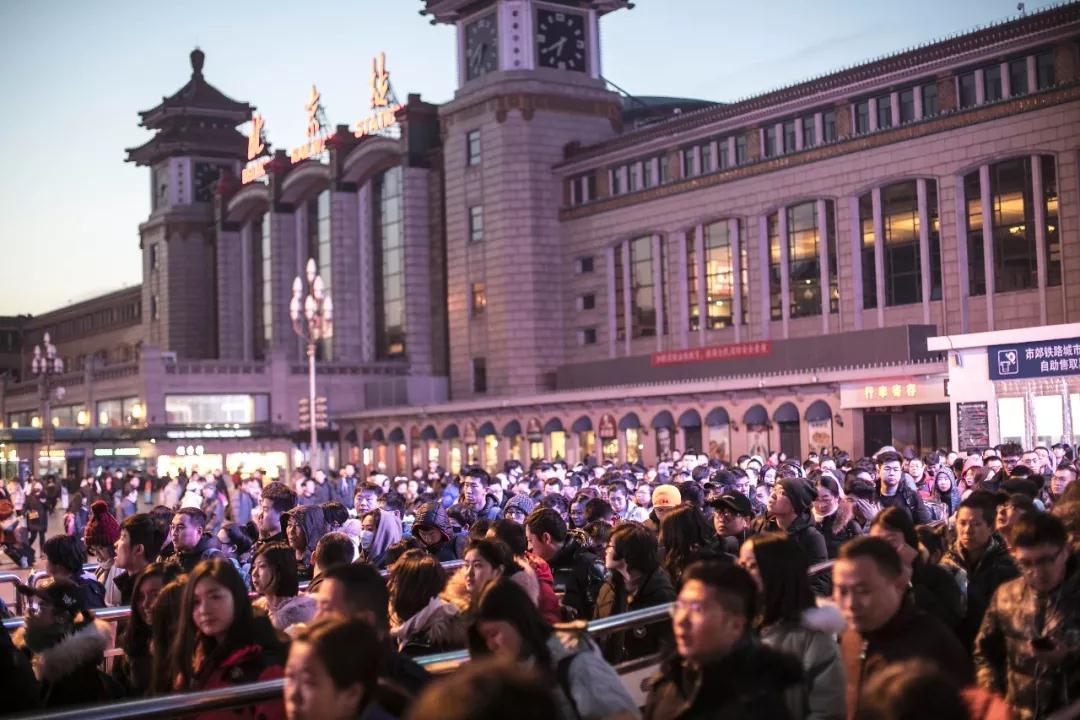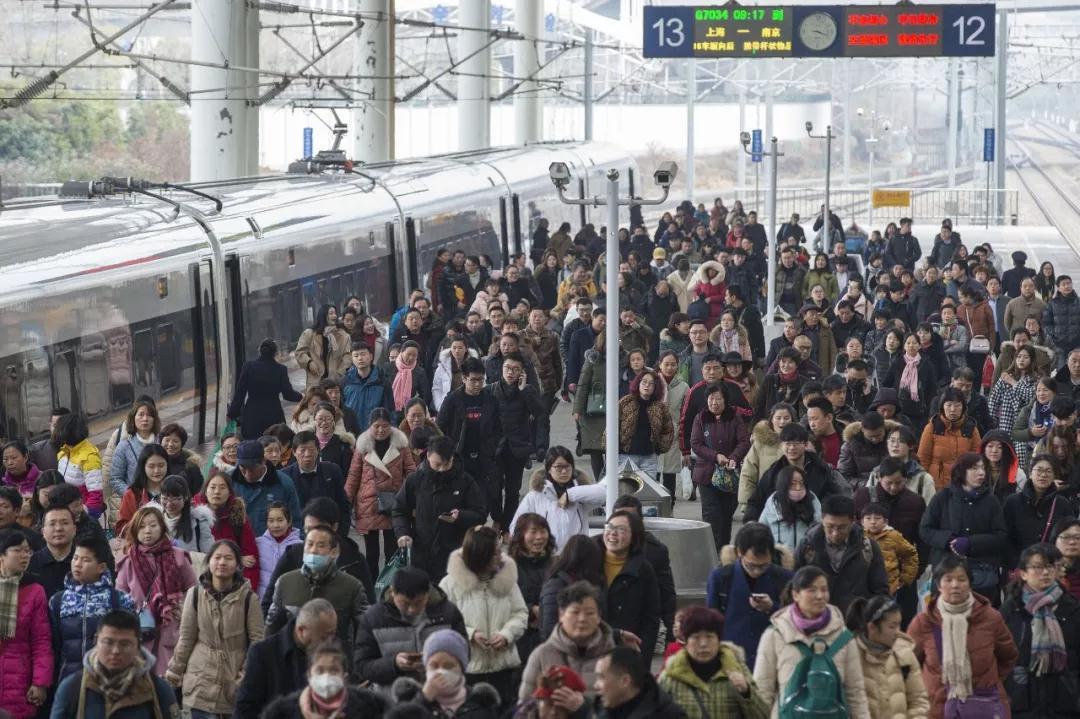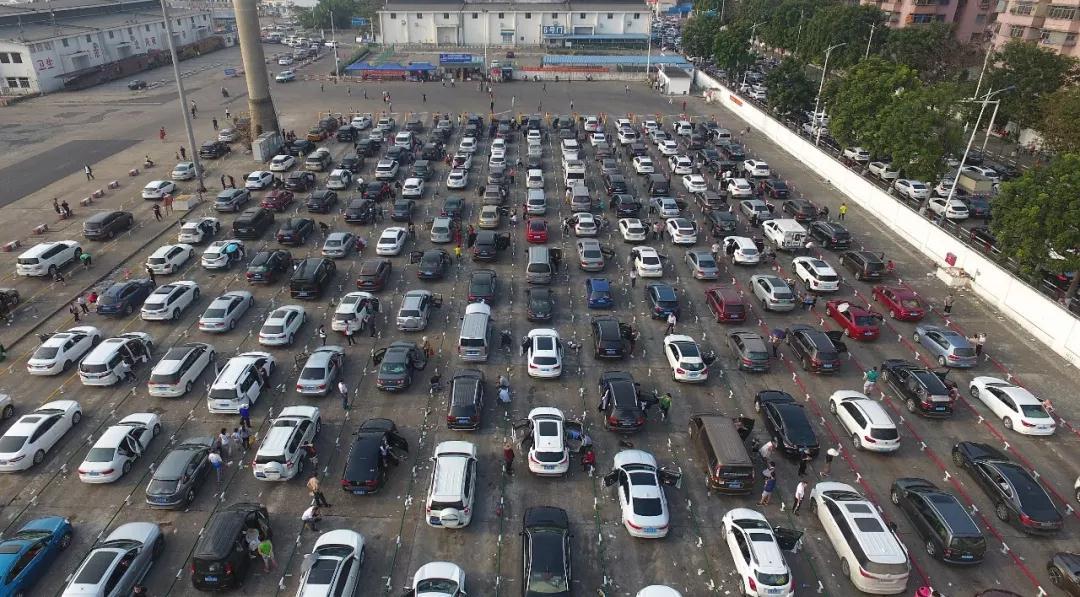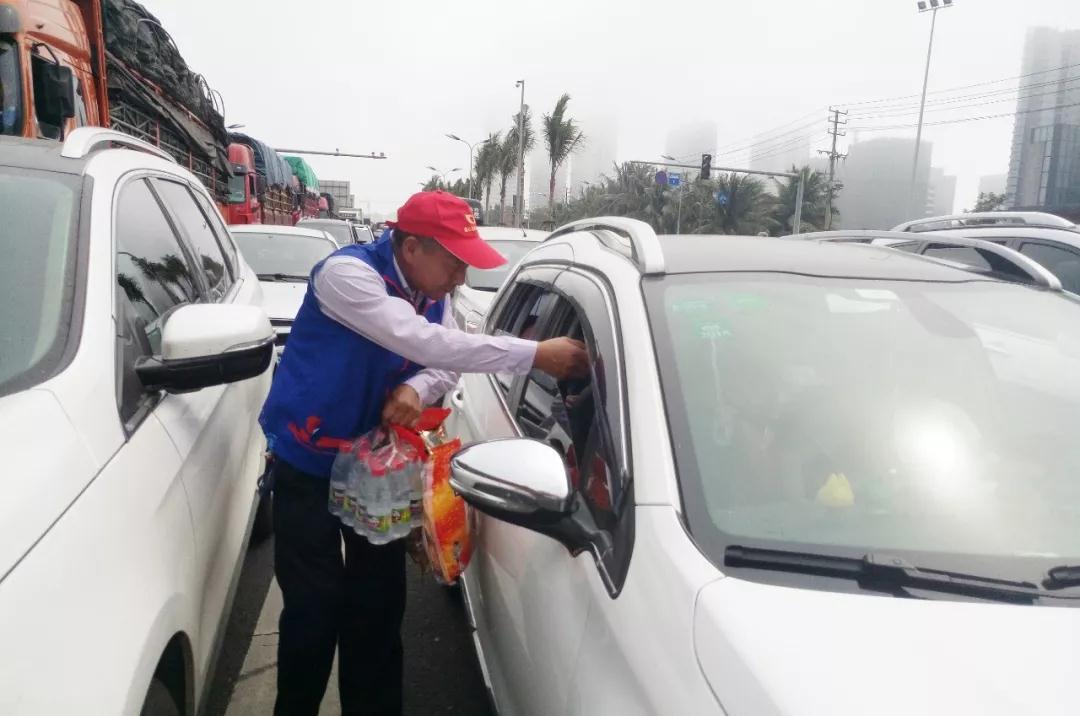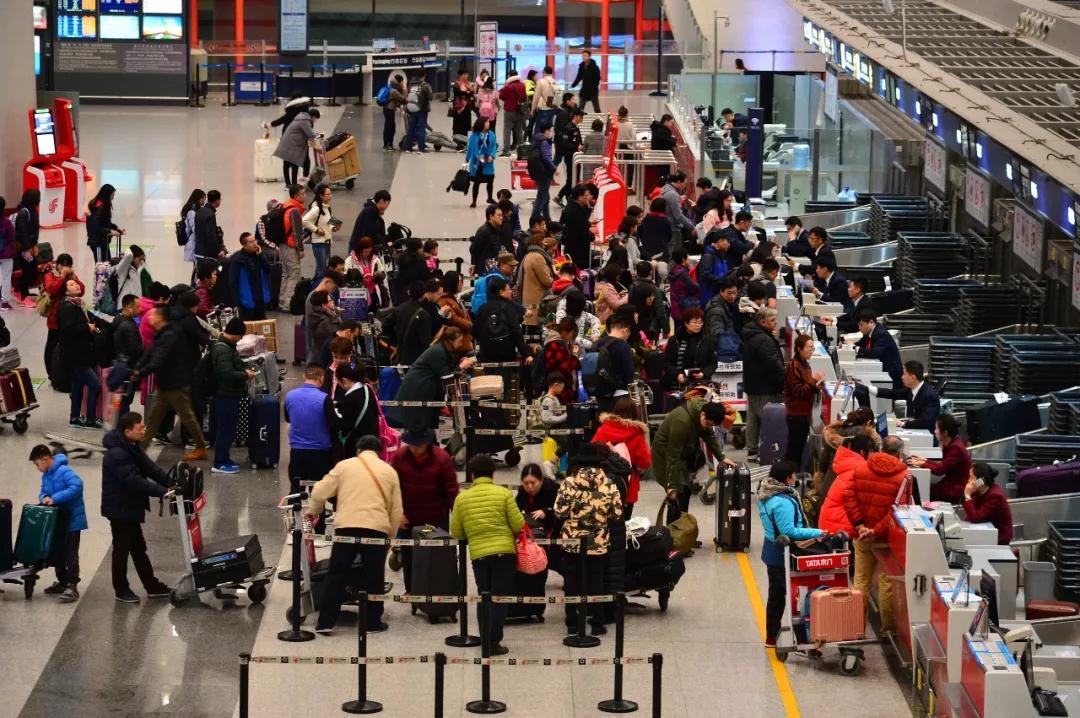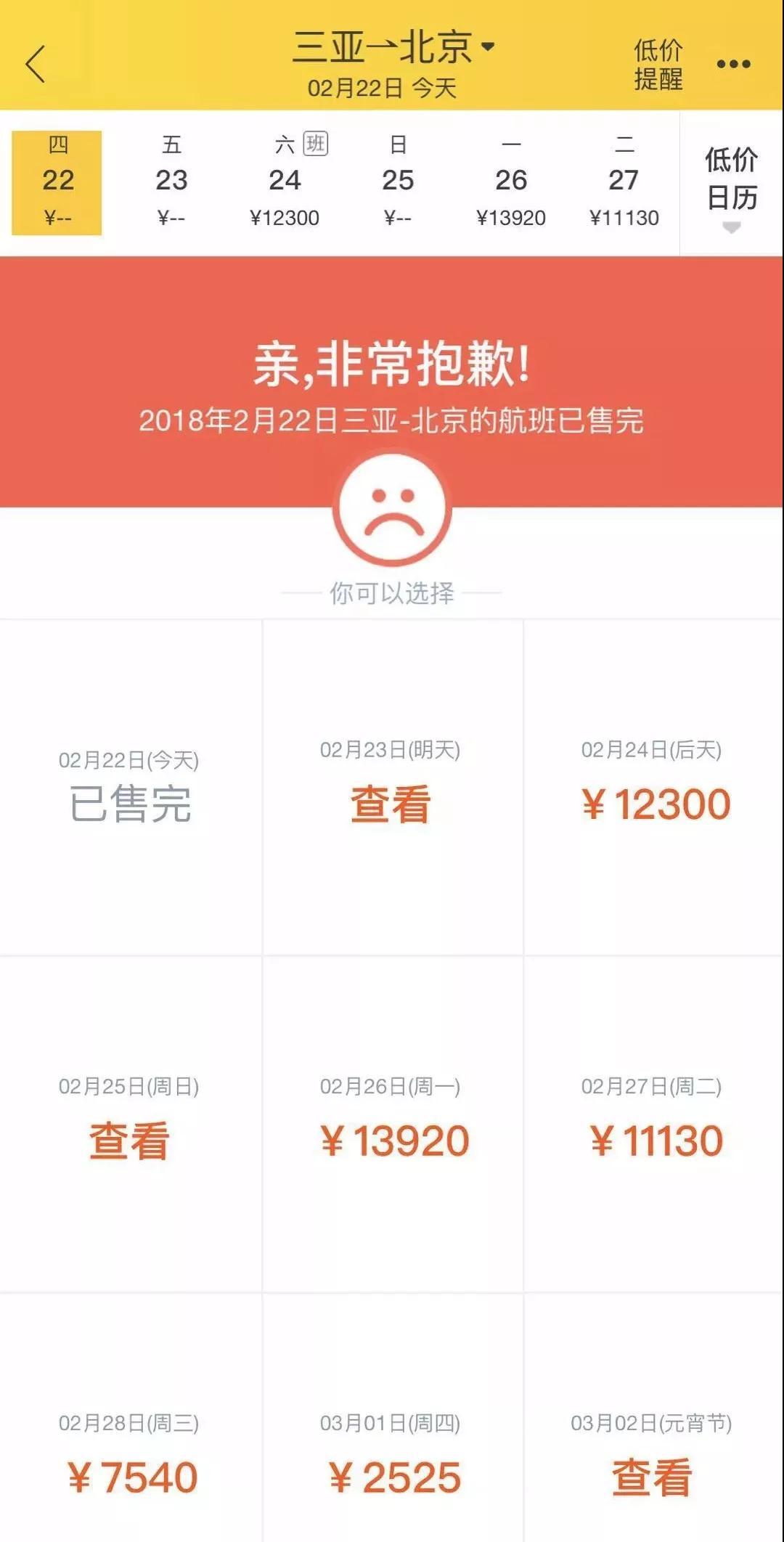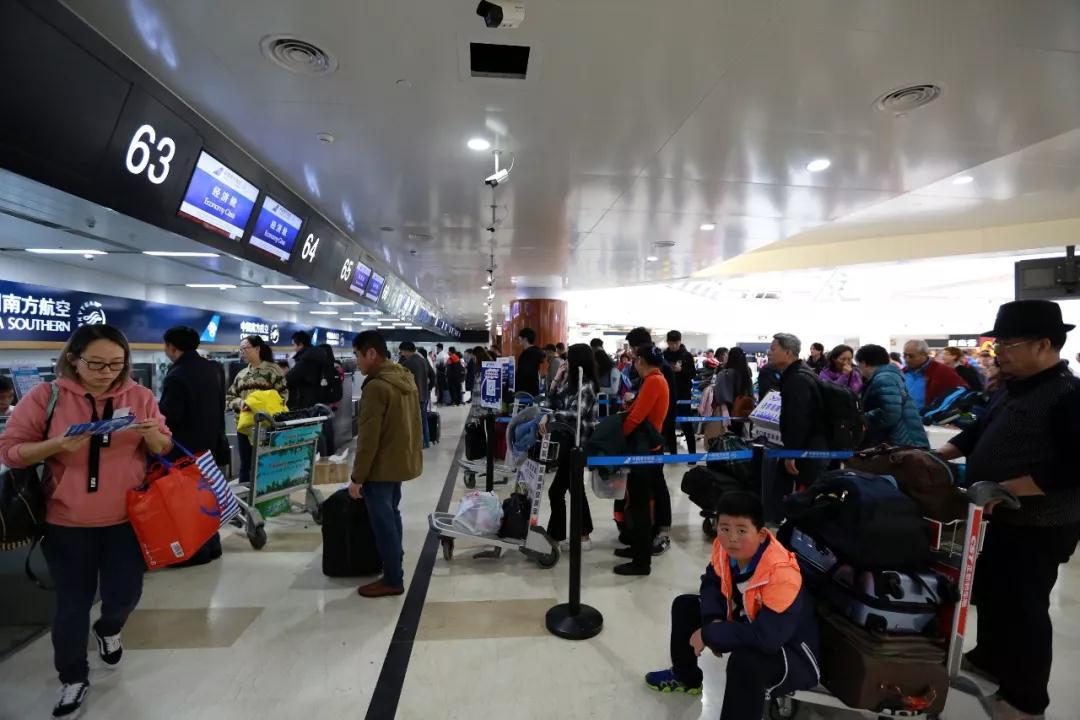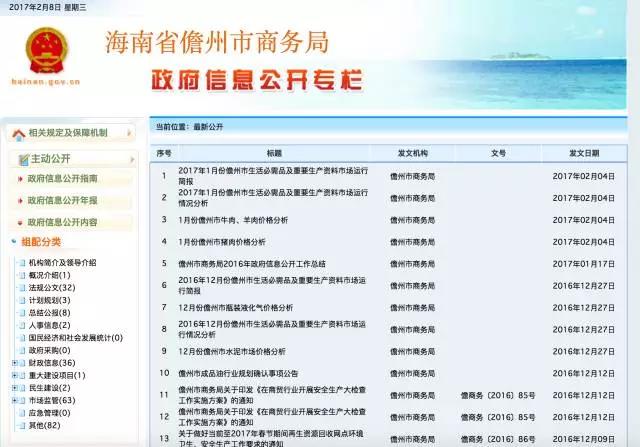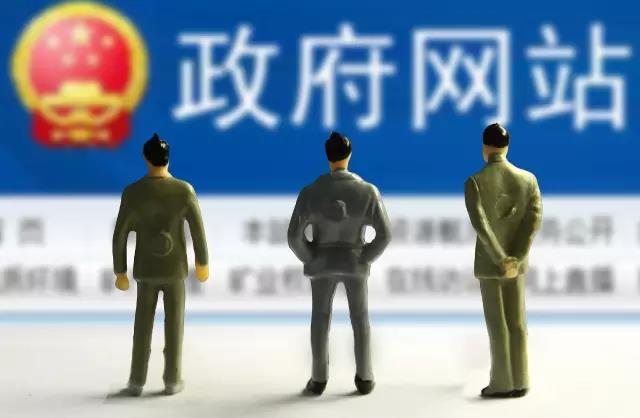The full text of the Assessment Provisions:
Provisions on the assessment of staff in public institutions
Chapter I General Principles
Article 1 These Provisions are formulated in accordance with the Regulations on Personnel Management of Public Institutions and relevant laws and regulations in order to accurately evaluate the professional performance and work performance of staff in public institutions, standardize the assessment of staff in public institutions, promote the construction of high-quality professional staff who can shoulder the heavy responsibility of national rejuvenation, be loyal and clean, and implement the standards of good cadres in the new era.
Article 2 Staff assessment in public institutions refers to the understanding, verification and evaluation of the political quality, performance ability, work performance and work style of staff in public institutions by public institutions or competent authorities (departments) in accordance with the authority of cadre and personnel management and the prescribed standards and procedures.
The assessment of the leaders of public institutions shall be carried out in accordance with the relevant provisions.
Article 3 The staff assessment of public institutions shall be guided by the Supreme Leader’s Socialism with Chinese characteristics Thought in the new era, implement the Party’s organizational line and the principles and policies for cadres’ work in the new era, focus on fully mobilizing the enthusiasm, initiative and creativity of the staff of public institutions, promote the high-quality development of public welfare undertakings in the new era, adhere to respect for labor, knowledge, talents and creativity, comprehensively and accurately evaluate the staff of public institutions, clearly establish the orientation of selecting and employing people in the new era, and promote the formation of "those who are competent, those who are superior, and those who are mediocre". At work, we should adhere to the following principles:
(a) the party is in charge of cadres and talents;
(2) Having both ability and political integrity and putting morality first;
(three) the cause is the best, fair and decent;
(four) pay attention to performance, recognized by the masses;
(five) classification, simple and effective;
(six) the combination of examination and use, rewards and punishments.
Article 4 The methods of staff assessment in public institutions are mainly annual assessment and employment period assessment, and peacetime assessment and special assessment are carried out according to the actual work.
Chapter II Assessment Contents
Article 5 The staff of public institutions shall be assessed on the basis of their job responsibilities and tasks, with a comprehensive assessment of morality, ability, diligence, performance and honesty, with emphasis on the assessment of morality and performance.
(1) Germany. Insist on putting political standards first, comprehensively assess political quality and moral conduct, focus on studying and implementing Socialism with Chinese characteristics Thought of the Supreme Leader in the new era, firmly support the "two establishment", strengthen the "four consciousnesses", strengthen the "four self-confidences", achieve the "two maintenance", strengthen ideals and beliefs, stick to the initial mission, be loyal to the Constitution, the country and the people; Adhere to principles, dare to struggle, and be good at fighting; Exemplary practice of socialist core values, caring for the motherland, serving the people, abiding by professional ethics, observing social morality, family virtues and personal morality.
(2) can. Comprehensively assess the level of political ability, work ability, professionalism and technical skills to meet the requirements of the new era, focusing on political judgment, political understanding, political execution and learning and research ability, ability to handle affairs according to law, mass work ability, communication and coordination ability, implementation ability, reform and innovation ability, and emergency response ability.
(3) diligence. Comprehensive assessment of mental state and work style, focusing on understanding the situation of dedication, diligence, responsibility, forge ahead, courage to create, and dedication.
(4) achievements. Comprehensively examine and practice the people-centered development thought, perform post responsibilities in accordance with laws and regulations, undertake urgent and dangerous tasks, and do practical things for the masses of workers, focusing on understanding the quantity, quality, timeliness, cost, social and economic benefits, and satisfaction of service targets.
(5) Cheap. Comprehensively assess the situation of honest employment, focusing on the implementation of the spirit of the eight central regulations and their detailed rules, the implementation of the relevant rules and regulations of the system, the industry and the unit, compliance with rules and discipline, honesty and self-discipline.
Article 6 The staff of public institutions shall be assessed by classification, and the assessment contents shall be detailed and clear, reflecting the characteristics and specific requirements of staff in different industries, different types, different levels and different positions, and enhancing pertinence and effectiveness.
Article 7 In the assessment of the staff of public institutions providing public welfare services to the society, the responsibilities of public welfare services should be highlighted, and the assessment of service quality, code of conduct, technical skills and work style construction should be strengthened. Institutions in key industries such as propaganda, ideology, culture, education, science and technology, health and wellness should, in accordance with the relevant requirements of promoting the reform of talent evaluation mechanism by classification, respectively determine the core elements of staff assessment content, reasonably set the index weight, and implement differentiated assessment based on industry attributes.
The assessment of the staff of institutions that mainly provide support and guarantee for the organs, highlighting the assessment of the performance of support and guarantee duties. According to the actual situation, it can be assessed and coordinated with the staff of the competent authority (department).
Article 8 The assessment of professional and technical personnel in public institutions shall be based on the characteristics of professional and technical work, oriented by innovative value, ability and contribution, and pay attention to public service awareness, professional theoretical knowledge, professional ability level, innovative services and achievements, etc.
The assessment of management personnel of public institutions should be combined with the characteristics of management work, focusing on management level, organization and coordination ability, standardization of work, honesty and diligence.
The assessment of workers and technicians in public institutions should be combined with the characteristics of workers and technicians, and pay attention to skill level, service attitude, quality and efficiency.
Chapter III Annual Assessment
Ninth annual assessment is a comprehensive assessment of the overall performance of staff in public institutions on an annual basis, generally at the end of each year or the beginning of the following year.
Tenth annual assessment results are generally divided into four grades: excellent, qualified, basically qualified and unqualified.
Eleventh annual assessment to determine the excellent grade shall meet the following conditions:
(a) high ideological and political quality, firm ideals and beliefs, resolutely implement the decision-making arrangements of the CPC Central Committee, abide by laws and regulations, abide by professional ethics, and have good social morality, family virtues and personal morality;
(two) strong ability to perform job responsibilities, proficient in their own business, and high professional and technical skills or management level corresponding to job requirements;
(three) public service awareness and strong sense of responsibility, diligence and dedication, strong sense of reform and innovation, good work style;
(four) fully perform their duties, complete all tasks with high quality, outstanding work performance, contribution to the society or units, and high satisfaction with the clients;
(five) honest practice and have an exemplary role in observing the discipline of honesty.
Twelfth annual assessment to determine the qualified grade shall meet the following conditions:
(a) high ideological and political quality, able to implement the decision-making arrangements of the CPC Central Committee, consciously abide by laws and regulations and professional ethics, and have good social morality, family virtue and personal morality;
(two) strong ability to perform job responsibilities, familiar with their own business, and high professional and technical skills or management level corresponding to job requirements;
(three) public service awareness and strong sense of responsibility, serious and responsible work, good work style;
(4) Being able to perform job responsibilities, completing work tasks well, and having high satisfaction with the clients;
(five) honest practice.
Thirteenth institutions staff in any of the following circumstances, the annual assessment should be determined as the basic qualified grade:
(a) the ideological and political quality is average, and there are obvious shortcomings in implementing the decision-making arrangements of the CPC Central Committee and observing professional ethics, social ethics, family virtues and personal morality;
(two) the ability to perform job responsibilities is weak, and the professional and technical skills or management level corresponding to the job requirements are low;
(three) the public service consciousness and sense of responsibility are general, the work discipline is not strong, the work is negative, or the work style is obviously insufficient;
(4) Being able to basically perform job responsibilities and complete tasks, but the quantity, quality and efficiency of the work completed are insufficient, or there are certain mistakes in the work, or the satisfaction of the clients is low;
(five) can basically be honest, but there are some shortcomings.
Fourteenth staff of public institutions in any of the following circumstances, the annual assessment shall be determined as unqualified grade:
(a) the ideological and political quality is poor, and there are serious problems in implementing the decision-making arrangements of the CPC Central Committee, professional ethics, social ethics, family virtues, personal morality, etc.;
(two) the professional quality and working ability can not meet the requirements of the post;
(three) lack of public service awareness and sense of responsibility, lack of responsibility or inaction, or poor work style;
(4) Failing to perform post duties, failing to complete work tasks, or causing heavy losses or adverse social impact due to serious dereliction of duty in the work;
(five) there are problems in the practice of honesty, and the situation is more serious.
Fifteenth institutions staff annual assessment of excellent grades, generally not more than 20% of the total number of staff should participate in the annual assessment. The number of places with excellent grades should be tilted to front-line posts, hard posts and those who receive commendation and awards.
Institutions in the corresponding assessment year under any of the following circumstances, with the approval of the competent authority (department) or the comprehensive personnel management department of institutions at the same level, the proportion of outstanding grades in the annual assessment of staff can be appropriately increased, generally at 25%:
(a) the unit won the collective merit award;
(two) the unit has made significant innovations or outstanding contributions, and has been recognized by the relevant authorities (departments);
(three) the unit performance appraisal has obtained excellent grades.
The unit performance appraisal is unqualified grade, and there are many problems and accountability institutions. The competent authority (department) or the comprehensive personnel management department of institutions at the same level shall reduce the proportion of excellent grades in their annual assessment, generally not exceeding 15%.
Sixteenth to carry out the annual assessment of the staff of public institutions, you can set up an assessment committee or assessment work leading group, responsible for the organization and implementation of the assessment work, and the corresponding organization and personnel departments to undertake specific work. The assessment committee or assessment work leading group is established by the unit, and is generally headed by the main person in charge of the unit, and its members are composed of other leaders of the unit, relevant personnel of the organization and personnel department and the discipline inspection and supervision institution, and employee representatives. Established by the competent authority (department), the competent authority (department) generally organizes the person in charge of the personnel department as the director (team leader), and the members are composed of relevant personnel of the personnel department organized by the competent authority (department), relevant leaders of institutions, relevant personnel engaged in organizing personnel and discipline inspection and supervision, and employee representatives.
Seventeenth annual assessment is generally carried out in accordance with the following procedures:
(a) to formulate a plan. The assessment committee or the assessment leading group shall formulate the annual assessment work plan of public institutions, and after listening to the opinions of the staff through the workers’ congress or other forms, release it to the whole unit.
(2) summing up the work. The staff of public institutions shall summarize the post responsibilities, tasks, assessment contents and relevant requirements, fill in the annual assessment form, and report on their work within a certain scope when necessary.
(3) Evaluation, verification and evaluation. The assessment committee or the assessment leading group can adopt democratic assessment, performance evaluation, listening to the opinions of the competent leaders, internal evaluation of the unit, satisfaction survey of clients, third-party evaluation and other methods in line with the post characteristics, comprehensively evaluate the assessment objects, and put forward suggestions on assessment grades.
(4) determine the grade. The leading bodies of public institutions or the competent authorities (departments) shall organize the personnel departments to collectively study and approve the assessment grades. Those to be determined as excellent grades must be publicized within the scope of the unit, and the publicity period is generally not less than 5 working days. The assessment results shall be informed to the assessed personnel in written form and signed by myself.
Chapter IV Examination of Employment Period
Article 18 The employment period assessment is an all-round assessment of the overall performance of the staff of public institutions during a complete employment period. It is based on the employment (appointment) contract and the annual assessment results during the employment period, and is generally completed within one month before the expiration of the employment (appointment) contract.
Engagement assessment focuses on the completion of engagement task objectives.
Article 19 The results of employment assessment are generally divided into qualified and unqualified grades.
Twentieth staff of public institutions to complete the objectives and tasks of the employment period, and the annual assessment during the employment period is qualified and above, the employment period assessment should be determined as qualified.
Twenty-first staff of public institutions, without justifiable reasons, failed to complete the objectives and tasks of employment, employment assessment should be determined as unqualified grade.
Twenty-second institutions staff employment assessment should generally be carried out in accordance with the procedures of summing up the debriefing, evaluation, verification and evaluation, performance analysis, determination of grades, etc., combined with the actual situation, it can also be coordinated with the annual assessment.
Chapter V Peacetime Assessment and Special Assessment
Twenty-third peacetime assessment is a regular assessment of the daily work and consistent performance of staff in public institutions.
Article 24 The usual assessment of the staff of public institutions shall be mainly carried out in combination with daily management work. According to the characteristics of industries and units, methods such as work inspection, attendance record, heart-to-heart talk and listening to opinions can be adopted. The specific operation measures shall be determined by public institutions in light of the actual situation.
Institutions can explore the establishment of peacetime assessment records and form assessment results according to their own reality. The usual assessment results can be determined in the form of assessment reports, comments, grades or appraisals.
Twenty-fifth special assessment is a targeted assessment of the working attitude, responsibility, role and actual effect of the staff of public institutions in completing important special work, undertaking urgent and dangerous tasks, and responding to and handling emergencies.
According to the usual grasp of the situation, the outstanding performance or problems reflect more staff, you can conduct special assessment.
Twenty-sixth to carry out special assessment of the staff of public institutions, can be carried out in accordance with the procedures of understanding and verification, comprehensive judgment, result feedback, or combined with the promotion of special work flexible arrangements.
Special assessment results can be determined in the form of assessment reports, comments, grades or appraisals.
Chapter VI Application of Assessment Results
Article 27 Adhere to the combination of examination and use, and combine the examination results with selection and appointment, training and education, management and supervision, encouragement and restraint, accountability and accountability, etc., as the basis for the staff of public institutions to adjust their posts, positions, staff grades, salaries, evaluate their professional titles and rewards, and change, renew, dissolve and terminate their employment (appointment) contracts.
Twenty-eighth institutions staff annual assessment is determined to be qualified above grade, in accordance with the following provisions:
(a) increase the first salary scale;
(2) Pay performance pay in accordance with relevant regulations;
(three) the assessment year is calculated as the service life of the current post (staff) level.
Among them, if the annual assessment is determined as an excellent grade, it should be tilted under the same conditions when allocating performance pay; Priority should be given to job promotion and job title evaluation under the same conditions.
Twenty-ninth institutions staff annual assessment is determined to be basically qualified grade, in accordance with the following provisions:
(a) ordered to make a written inspection, the deadline for improvement;
(two) shall not increase the salary scale;
(3) Reduce performance pay accordingly;
(four) this assessment year is not calculated as the service life of the current post (staff) level, and the post (staff) level shall not be promoted in the next assessment year;
(five) for two consecutive years, it has been determined to be basically qualified, and it shall be adjusted or handled.
Thirtieth institutions staff annual assessment is determined to be unqualified grade, in accordance with the following provisions:
(a) shall not increase the salary scale;
(2) Reduce performance pay accordingly;
(three) to the lower level post (staff) level modulation;
(four) the assessment year is not calculated as the service life of the current post (staff) level;
(five) if it is determined to be unqualified and does not agree to adjust the post, or if it is determined to be unqualified for two consecutive years, the employment (appointment) contract may be terminated according to regulations.
Among them, if the post (employee) level has been reduced according to the regulations when being dealt with and punished, and the annual assessment of that year is determined to be unqualified, in order to avoid repeated punishment, level modulation will not be sent to the lower post (employee).
Thirty-first institutions staff annual assessment of uncertain grades, in accordance with the following provisions:
(a) shall not increase the salary scale;
(2) Reduce performance pay accordingly;
(three) the assessment year is not calculated as the service life of the current post (staff) level, and if the grade is uncertain for two consecutive years, the post will be adjusted according to the situation.
Article 32 If the employment period of the staff of a public institution is determined to be qualified and the employed post still exists, the employment (appointment) contract may be renewed through consultation between the staff and the institution.
If the term of employment is determined to be unqualified, the contract will not be renewed at the expiration of the contract; If it is really necessary to renew the employment (appointment) contract under special circumstances, it shall be reported to the competent authority (department) for examination and approval.
Article 33 The conclusive materials formed by the staff assessment of public institutions shall be kept in the personnel files of cadres.
Thirty-fourth peacetime assessment, special assessment results as an important reference for the annual assessment, employment assessment.
Using the results of usual assessment and special assessment, we should strengthen the incentive and restraint, cultivate education, encourage the advanced and spur the backward.
Article 35 If problems are found in the staff of public institutions during the assessment, they shall be dealt with and punished according to the nature and seriousness of the problems. Anyone suspected of committing a crime shall be investigated for criminal responsibility according to law.
Thirty-sixth staff of public institutions who are dissatisfied with the grades determined to be basically qualified or unqualified may apply for review and lodge a complaint in accordance with relevant regulations.
Chapter VII Related Matters
Thirty-seventh employees of institutions who are employed for the first time, who are dissatisfied with the assessment year for half a year (including probation period), will participate in the annual assessment, only write comments, and are not sure about the grade.
For staff who are not employed for the first time, the working hours in other units in the same year are combined with the working hours in this unit. If they are dissatisfied with the annual assessment for half a year (including the probation period), they will participate in the annual assessment and only write comments, with uncertain grades; For those who have completed the annual assessment for half a year (including the probation period), their current institutions shall conduct annual assessment and determine the grade, and the original work unit shall provide relevant information.
The working hours of other units mentioned in the preceding paragraph can be comprehensively identified according to the relevant records of cadres’ personnel files, labor contracts and social insurance payment certificates.
Thirty-eighth annual assessment of the staff assigned by public institutions shall be handled in accordance with the following provisions:
(a) temporary, aid, overseas staff, in general, during the period of assignment by the work time of more than half a year to assess the unit and in an appropriate way to listen to the opinions of the sending unit or receiving unit.
(II) The staff sent by the unit to study and train and perform tasks, and the professional and technical personnel who have been approved to innovate part-time or start an enterprise on the job, or who have been sent to work in an enterprise and participate in project cooperation, shall be assessed by the unit where the personnel relationship is located, and the grades shall be determined mainly according to the performance of study and training, task execution, innovation and entrepreneurship, and the relevant units shall provide the performance outside.
Article 39 The assessment of personnel who hold positions in both management positions and professional and technical positions in public institutions shall be based on the responsibilities and tasks of the two positions, and the dual-post and dual-assessment shall be implemented.
Fortieth, based on the characteristics of their work, we should explore and improve the assessment methods for scientific researchers in universities, research institutes and other institutions, reasonably determine the assessment period and frequency, and promote scientific researchers to devote themselves to research and create scientific research results.
Forty-first sick leave, personal leave, non-unit sent out to study and train for more than half a year in the annual assessment, to participate in the annual assessment, uncertain grade.
Female employees who take maternity leave for more than half a year in accordance with the regulations shall participate in the annual assessment and determine the grade.
Forty-second staff members of public institutions suspected of violating discipline and law have been put on file for review and investigation, but the case has not been closed, so they will take part in the annual assessment, do not write comments, and are uncertain about their grades. If the case is not punished or given a warning after the case is closed, the grade shall be fixed according to the regulations.
Forty-third staff members of public institutions who have been punished by party discipline and government affairs or organized to handle and admonish them shall participate in the annual assessment and shall be handled in accordance with relevant regulations.
At the same time, if it is punished by party discipline and government affairs and organized to deal with it, the annual assessment results shall be determined according to the treatment and punishment that have a greater impact on its annual assessment results.
Forty-fourth staff of institutions who do not participate in the assessment without justifiable reasons, but still refuse to participate after education, are directly determined to be unqualified.
Forty-fifth institutions or competent authorities (departments) should strengthen the overall planning of assessment work, optimize the workflow, pay attention to the use of Internet technology and information technology, carry out assessment work simply and efficiently, and improve the quality and efficiency of assessment.
Forty-sixth comprehensive personnel management departments and competent authorities (departments) of public institutions at all levels shall strengthen the guidance and supervision of the assessment of staff in public institutions.
Those who engage in malpractices for personal gain, take revenge and resort to deceit in the assessment process will be severely dealt with in accordance with the relevant provisions.
Chapter VIII Supplementary Provisions
Forty-seventh organs of the staff assessment, with reference to these provisions.
Article 48 All localities and departments may, in accordance with these Provisions and in light of the actual situation, formulate specific measures or detailed rules for staff assessment of public institutions.
Article 49 The Organization Department of the CPC Central Committee and the Ministry of Human Resources and Social Security shall be responsible for the interpretation of these Provisions.
Article 50 These Provisions shall come into force as of the date of promulgation.
